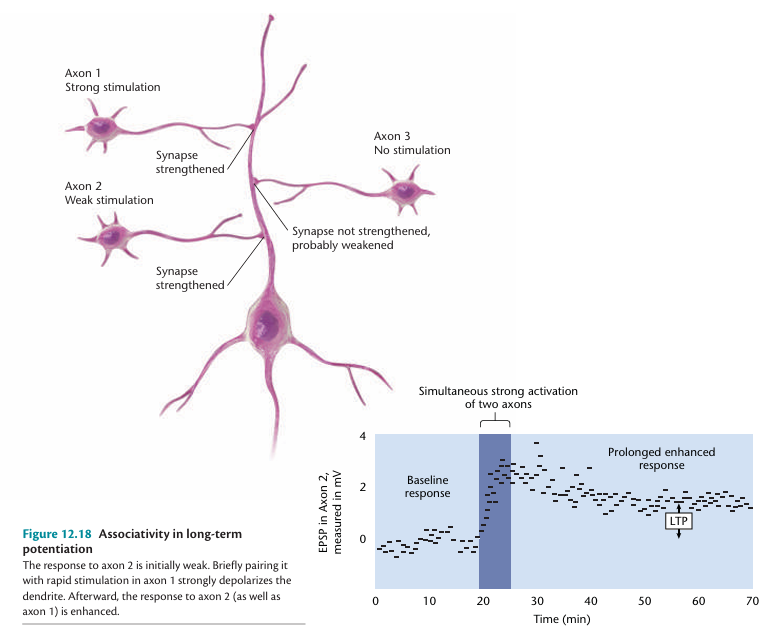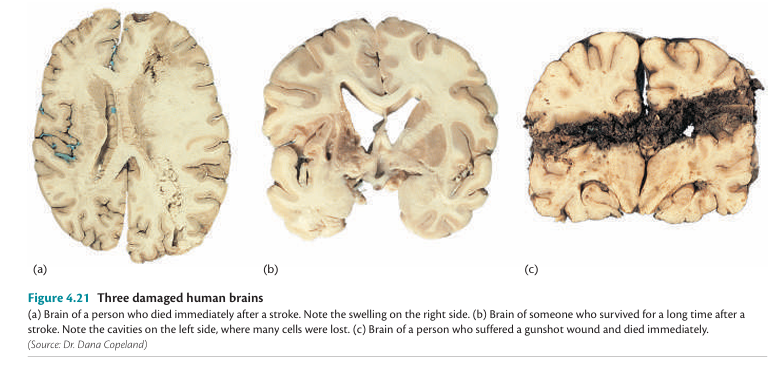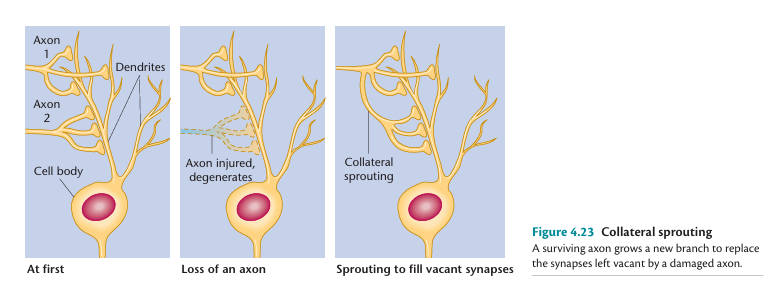Introduction
Contrary to early beliefs that the adult brain is a static organ, contemporary neuroscience confirms that the brain remains plastic throughout life. Neuroplasticity involves several processes—neurogenesis, synaptic pruning, dendritic arborization, and cortical remapping—that enable the brain to adapt, learn, and recover (Kalat, 2019; Pinel & Barnes, 2018). These changes occur both structurally and functionally and are fundamental for both normal cognitive development and compensatory processes following brain damage.
Brain plasticity, also known as neuroplasticity, is the brain’s ability to change and adapt its structure and function in response to experience, learning, environmental influences, or injury. This adaptability includes modifications at the synaptic level, the generation of new neurons, and the reorganization of neural networks.
“Neuroplasticity refers to the brain’s ability to change its chemistry, structure, and function in response to experience, including the experience of damage” (Pinel & Barnes, 2018, p. 266).
Read More- Brain Hemispheres
Developmental Plasticity
Neural Development
The brain begins forming from the neural tube during early embryogenesis. Key stages include:

Neural Development and Sex Differentiation
- Neural proliferation: Rapid production of neural precursor cells.
- Migration: Cells travel to their appropriate locations.
- Differentiation and synaptogenesis: Neurons develop specialized functions and form synaptic connections.
- Apoptosis and synaptic pruning: Redundant neurons and connections are eliminated for network efficiency (Pinel & Barnes, 2018).
Critical and Sensitive Periods
- Critical periods are developmental windows during which the brain is especially receptive to specific environmental stimuli. For example, visual input in infancy is essential for proper development of the visual cortex (Kalat, 2019).
- Sensitive periods are more flexible but still crucial for optimal development, such as in language acquisition.
A landmark study in kittens by Hubel and Wiesel showed that occluding one eye during a critical period caused permanent cortical blindness in that eye, despite its anatomical normalcy (Pinel & Barnes, 2018).
Mechanisms of Neuroplasticity
Three mechanism of neuroplasticity include-
1. Synaptogenesis and Dendritic Remodeling
Learning and enriched environments increase synapse formation and dendritic complexity. Experimental animals raised in stimulating environments exhibit:
- Increased cortical thickness.
- Enhanced dendritic branching.
- Greater synaptic density (Kalat, 2019).
2. Long-Term Potentiation (LTP)
LTP is a long-lasting enhancement in signal transmission between two neurons that results from simultaneous stimulation. It’s considered a key cellular mechanism underlying learning and memory (Pinel & Barnes, 2018).

Long Term Potentiation
3. Neurogenesis
- Hippocampus and olfactory bulb are two brain regions where adult neurogenesis has been consistently observed.
- In humans, hippocampal neurogenesis contributes to learning, mood regulation, and cognitive flexibility (Kalat, 2019).
4. Cortical Reorganization
Cortical areas can take over functions of damaged or unused regions. For example:
- Somatosensory reorganization occurs after limb amputation, contributing to phantom limb phenomena.
- Blind individuals show enhanced auditory or tactile processing in occipital areas (Pinel & Barnes, 2018).
Plasticity in Adulthood
Though less dynamic than in childhood, adult brains retain significant plastic potential. Factors influencing adult neuroplasticity include:
- Learning and experience: Mastering new skills or languages alters brain networks.
- Physical exercise: Enhances hippocampal neurogenesis and increases brain-derived neurotrophic factor (BDNF).
- Mindfulness and meditation: Associated with increased cortical thickness in attention and emotion regulation areas.
Environmental enrichment and continuous learning are thus vital for maintaining cognitive health across the lifespan (Pinel & Barnes, 2018).
Brain Plasticity after Injury
Some important mechanism after injury include-

Types of Brain Injuries
Recovery Mechanisms
Recovery post-injury involves several plastic processes:

Axonal Sprouting
- Diaschisis resolution: Restored function in distant but connected areas affected by the initial lesion.
- Axonal sprouting: Intact neurons sprout new branches to reinnervate denervated targets.
- Synaptic strengthening: Remaining pathways may strengthen to compensate for lost input.
- Functional reorganization: Undamaged regions assume control of lost functions (Kalat, 2019).
Stroke Rehabilitation
- Constraint-induced movement therapy (CIMT) forces the use of impaired limbs to promote functional recovery.
- Neurostimulation techniques like transcranial magnetic stimulation (TMS) are used to facilitate cortical reactivation.
- Physical and cognitive therapy improves plastic adaptation, especially when initiated early (Pinel & Barnes, 2018).
Phantom Limb Syndrome
After amputation, the somatosensory cortex reorganizes, allowing adjacent representations to invade the deafferented area. This reorganization underlies phantom limb sensations and pain, which can be mitigated using mirror therapy (Kalat, 2019).
Experimental and Clinical Evidence
Some important evidence includes-
Animal Studies
- Rodents exposed to enriched environments demonstrate better memory and learning performance due to increased neuroplasticity (Pinel & Barnes, 2018).
- Monkeys with motor cortex lesions regain function through cortical remapping and training.
Human Studies
- London taxi drivers exhibit larger posterior hippocampi compared to non-drivers, likely due to navigational experience (Maguire et al., 2000).
- Stroke patients show reorganization of language or motor functions to the contralateral hemisphere, enabling partial recovery (Kalat, 2019).
Case Studies
H.M., a patient who underwent bilateral medial temporal lobectomy, demonstrated that procedural learning could occur independently of the hippocampus, indicating distributed memory systems and adaptive compensation (Scoville & Milner, 1957).
Implications for Learning and Education
Educational practices can leverage neuroplastic principles:
- Spaced repetition and active recall improve LTP and memory retention.
- Multisensory learning activates multiple brain regions and strengthens encoding.
- Bilingualism enhances executive function and cognitive flexibility.
Early intervention in developmental disorders such as dyslexia or ADHD is crucial because of greater plastic potential in childhood (Pinel & Barnes, 2018).
Challenges and Limitations
While neuroplasticity provides a powerful mechanism for adaptation, it has limitations:
- Maladaptive plasticity can lead to chronic pain, epilepsy, or compulsive behaviors.
- Age: Plasticity decreases with age due to reduced neurogenesis and synaptic formation.
- Extent of damage: Severe or widespread injury may surpass the brain’s compensatory capacity.
Understanding and guiding plastic changes through therapeutic interventions remains a major focus of neurorehabilitation research.
Conclusion
Brain plasticity is a cornerstone of neuroscience, underpinning our understanding of development, learning, and recovery. It is the brain’s capacity to change its structure and function in response to intrinsic or extrinsic factors. This adaptive feature offers hope for individuals with brain injuries, developmental disorders, or age-related decline. Advances in neuroimaging, rehabilitation, and cognitive training continue to harness the potential of neuroplasticity, emphasizing the need for lifelong learning and environmental engagement.
References
Kalat, J. W. (2019). Biological psychology (13th ed.). Cengage Learning.
Pinel, J. P. J., & Barnes, S. J. (2018). Biopsychology (10th ed., Global ed.). Pearson Education.
Maguire, E. A., Gadian, D. G., Johnsrude, I. S., Good, C. D., Ashburner, J., Frackowiak, R. S., & Frith, C. D. (2000). Navigation-related structural change in the hippocampi of taxi drivers. Proceedings of the National Academy of Sciences, 97(8), 4398–4403. https://doi.org/10.1073/pnas.070039597
Scoville, W. B., & Milner, B. (1957). Loss of recent memory after bilateral hippocampal lesions. Journal of Neurology, Neurosurgery & Psychiatry, 20(1), 11–21. https://doi.org/10.1136/jnnp.20.1.11
Subscribe to Careershodh
Get the latest updates and insights.
Join 18,649 other subscribers!
Niwlikar, B. A. (2025, June 20). Brain Plasticity and 4 Important Mechanisms of It. Careershodh. https://www.careershodh.com/brain-plasticity/
